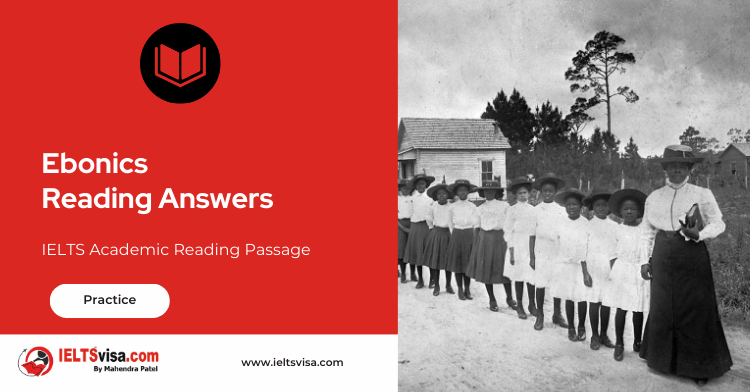Jumping spiders Reading Answers
IELTS Academic Reading Passage
A. For a stalking predator, the element of surprise is crucial. And for jumping spiders that sneak onto other spiders’ webs to prey on their owners, it can be the difference between having lunch and becoming it. Now zoologists have discovered the secret of these spiders’ tactics: creeping forward when their prey’s web is vibrating.
B. The fifteen known species of Portia jumping spiders are relatively small, with adults being about two centimeters long (that’s smaller than the cap on most pens). They habitually stay in the webs of other spiders, and in an area of these webs that is as out-of-the-way as possible. Portia spiders live mostly in tropical forests, where the climate is hot and humid. They hunt a range of other spiders, some of which could easily turn the tables on them. ‘They will attack something about twice their own size if they are really hungry,’ says Stimson Wilcox of Binghamton University in New York State. Wilcox and his colleague, Kristen Gentile of the University of Canterbury in Christchurch, New Zealand, wanted to find out how Portia spiders keep the upper hand.
C. All jumping spiders have large eyes that look like binocular lenses, and they function pretty much the same way. Most jumping spiders locate their prey visually, and then jump and capture from one centimeter to over ten centimeters away. Only a few species of jumping spiders invade the webs of other spiders, and the Portia spider is among them. Jumping spiders, including Portia spiders, prey on insects and other arthropods by stalking. Sometimes the spiders lure their victims by vibrating the web to mimic the struggles of a trapped insect. But many web-weaving spiders appear to be wise to these tricks, so stalking is often a better strategy. Sometimes, the researchers found, Portia spiders take advantage of the vibrations created in the web by a gentle breeze. But if necessary, they will make their own vibrations.
D. The researchers allowed various prey spiders to spin webs in the laboratory and then introduced Portia spiders. To simulate the shaking effect of a breeze the zoologists used either a model aircraft propeller or attached a tiny magnet to the centre of the web which could be vibrated by applying a varying electrical field. The researchers noticed that the stalking Portia spiders moved more when the webs were shaking than when they were still, and they were more likely to capture their prey during tests in which the webs were periodically shaken than in those where the webs were undisturbed. If the spiders were placed onto unoccupied webs, they would make no attempt to change their movements.
E. It is the Portia spider’s tactic of making its victims’ webs shake that has most intrigued the researchers. They noticed that the spiders would sometimes shake their quarry’s web violently, then creep forwards up to five millimeters before the vibrations died down. ‘They’d make a big pluck with one of their hind legs,’ says Wilcox. These twangs were much more powerful than the gentler vibrations Portia spiders use to mimic a trapped insect, and the researchers were initially surprised that the prey spiders did not respond to them in any way. But they have since discovered that the violent twanging produces a pattern of vibrations that match those caused by a twig falling onto the web.
F. Other predators make use of natural ‘smokescreens’ or disguise to hide from their prey: lions hunting at night, for example, move in on their prey when clouds obscure the moon. ‘But this is the first example of an animal making its own smokescreen that we know of,’ says Wilcox. ‘Portia spiders are clearly intelligent and they often learn from their prey as they are trying to capture it. They do this by making different signals on the web of their prey until the prey spider makes a movement. In general, Portia spiders adjust their stalking strategy according to their prey and what the prey is doing. Thus, Portia spiders use trial-and-error learning in stalking. Sometimes they will even take an indirect route to reach a prey spider they can see from a distance. This can sometimes take one to two hours following a predetermined route. When it does this, the Portia spider is actually solving problems and thinking ahead about its actions.’
Questions 1-9:
Which paragraph contains the following information?
Write the correct letter A-F on your answer sheet.
- the reaction of the Portia spider’s prey to strong web vibrations
- a description of how the researchers set up their experiment
- a comparison between Portia spiders and other animal species
- an explanation of how the researchers mimicked natural conditions.
- a comparison between Portia spiders and their prey
- the reason why concealment is important to Portia spiders
- a description of the Portia spider’s habitat
- the number of species of Portia spiders
- an example of the Portia spider’s cleverness
Questions 10-13
Choose the correct letter, A, B, C, or D, and write it on your answer sheet.
10: In their laboratory experiments, the researchers found that the Portia spiders moved most when the web was
A. vibrating
B. motionless
C. undisturbed
D. unoccupied
11: What discovery did the researchers make about Portia spiders?
A. They make very strong vibrations with one leg.
B. They move 5 mm at a time on a still web.
C. They move slowly when vibrations stop.
D. They use energetic vibrations to mimic a trapped insect.
12: Portia spiders are the only known animal to
A. use the weather to disguise themselves.
B. mimic other prey-eating animals.
C. creates their smokescreen.
D. stalk using ‘trial and error’.
13: The Portia spider demonstrates ‘thinking ahead’ when it
A. chooses prey that is a short distance away.
B. takes a longer route to reach its prey.
C. reaches its prey in a short time.
D. solves the problem of locating its prey.

Solution For: Jumping spiders
Reading Answers
| 1 E | 2 D |
| 3 F | 4 D |
| 5 B | 6 A |
| 7 B | 8 B |
| 9 F | 10 A |
| 11 A | 12 C |
| 13 D |
Review and Practice
- Regularly practice with IELTS reading samples and time yourself to get used to the pressure of the exam.
- Review your mistakes to understand where you went wrong and how to avoid similar errors in the future.
Our Books
Master IELTS Speaking Part 1
IELTS Writing Task 1 Book
IELTS Writing Task 2 Book
Jumping spiders Reading Answers Explanation
Comin Soon
Practice IELTS Other Modules
IELTS Listening
The IELTS Listening test assesses how well you can understand spoken English in various contexts. It lasts about 30 minutes and is divided into four sections with a total of 40 questions. The listening tasks become increasingly difficult as the test progresses.
IELTS Academic Reading
The IELTS Academic Reading section assesses your ability to understand and interpret a variety of texts in academic settings. It is designed to evaluate a range of reading skills, including skimming for gist, reading for main ideas, reading for detail, understanding inferences, and recognizing a writer's opinions and arguments.
IELTS Speaking
The IELTS Speaking test assesses your ability to communicate in English on everyday topics. It lasts 11-14 minutes and consists of three parts: introduction, cue card, and a discussion based on the cue card topic.
IELTS General Reading
IELTS General Reading tests your ability to understand and interpret various types of texts. Here are some key areas and types of content you can expect to encounter in the reading section, along with tips for effective preparation.
IELTS Academic Writing Task 1
In IELTS Academic Writing Task 1, you are presented with a visual representation of information, such as graphs, charts, tables, or diagrams, and you are required to summarize, compare, or explain the data in your own words.
IELTS General Writing Task 1
In IELTS General Writing Task 1, you are required to write a letter based on a given situation. The letter can be formal, semi-formal, or informal, depending on the prompt. Here’s a breakdown of the key components to include in your letter
IELTS Academic Writing Task 2
In IELTS Academic Writing Task 2, you are required to write an essay in response to a question or topic. Here’s a guide to help you understand the essential elements of this task
IELTS Exam Tips
To succeed in the IELTS exam, practice regularly, familiarize yourself with the test format, improve your vocabulary, develop time management skills, and take mock tests to build confidence.
Grammer for IELTS
Grammar is the foundation of effective communication in English. Understanding tense usage, subject-verb agreement, and sentence structure enhances clarity and coherence in writing and speaking.
Vocabulary for IELTS
Vocabulary plays a crucial role in the IELTS (International English Language Testing System) exam, especially in the Speaking and Writing sections. Here’s an overview of why vocabulary is important and how it impacts your performance
RECENT IELTS SAMPLES QUESTIONS AND ANSWERS
Ebonics Reading Answers
A. Ebonics - also known by a host of other names such as African American Vernacular English,...
A Disaster Of Titanic Proportions
A. At 11:39 p.m. on the evening of Sunday, 14 April 1912, lookouts Frederick Fleet and...
Vitamins To supplement or not?
Mineral, vitamin, and antioxidant health supplements make up a multi-billion-dollar industry...
The Hollywood film industry
A. This chapter examines the ‘Golden Age’ of the Hollywood film studio system and explores how...
Three Dimensional Films Reading Answers
A. In the theatre of the Ambassador Hotel in Los Angeles, on the evening of 27 September 1922,...
The Developing World Reading Answers
A THE DEVELOPING WORLD — the economically underdeveloped countries of Asia. Africa. Oceania...













